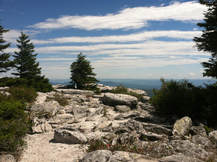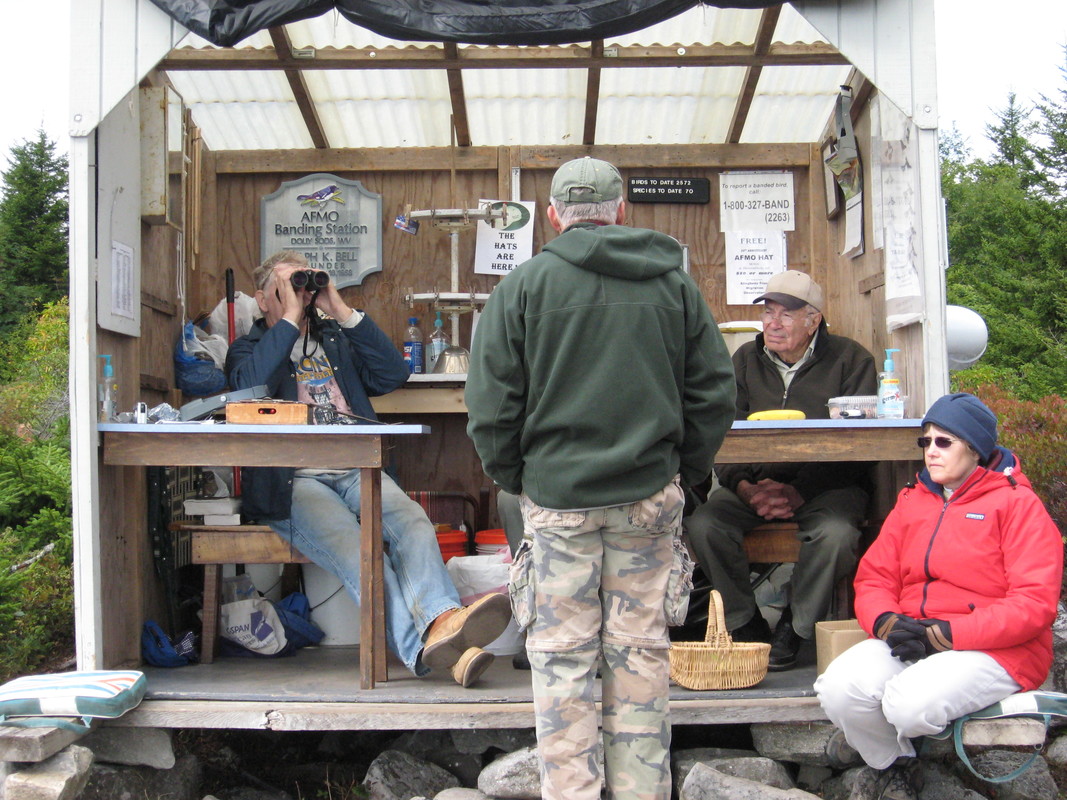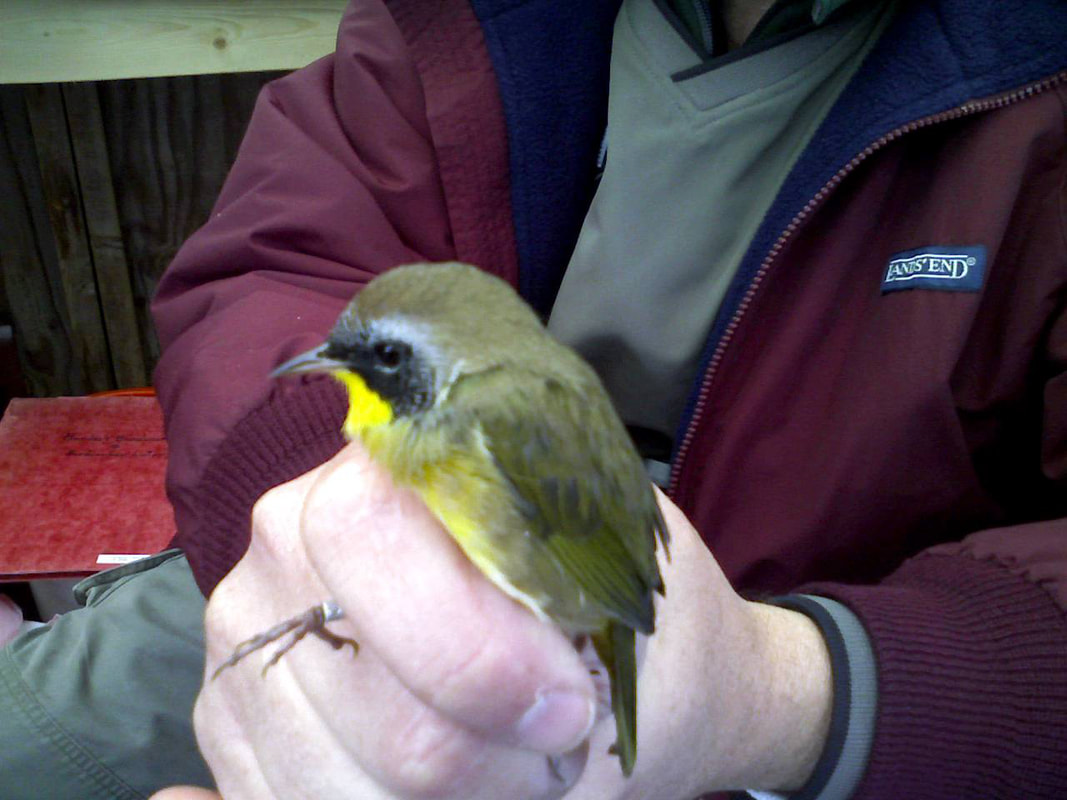Allegheny Front Migratory Observatory (AFMO)
The Allegheny Front Migratory Observatory (AFMO) is located within the Monongahela National Forest in Grant County West Virginia. Ten miles southeast of Davis West Virginia, the banding station sits 4,000 feet up on the Allegheny Front Mountain range in the area known as Dolly Sods. The observatory station and mist nets are set up in late summer and then dismantled in early fall each year.
AFMO is the oldest, continuous Bird Banding Station in North America.
The BBC oversees the AFMO bird banding station.
The AFMO banding station runs from late August to early October.
If you would like to contribute to the banding station and its continued success, you can by donating to our new BBC AFMO Fund!
The BBC oversees the AFMO bird banding station.
The AFMO banding station runs from late August to early October.
If you would like to contribute to the banding station and its continued success, you can by donating to our new BBC AFMO Fund!
Data from this 2023 season will be posted when received. Additionally, more updates are in the works.
Fall ~ 2018
AFMO opened on August 19 and closed on October 6, 2018. This was our 61st consecutive year of Bird Banding at AFMO. A total of 3259 birds were banded (3,506 in 2017) of 74 species (71 in 2017) with a Station effort of 77 birds per 100 net hours. A total of 273,524 birds have been banded since Ralph K. Bell founded AFMO and banded his first bird on September 18, 1958.
The total species banded at AFMO from 1958 ~ 2018 = 127.
Copyright 2018 Joan Bell Pattison All right reserved
The total species banded at AFMO from 1958 ~ 2018 = 127.
Copyright 2018 Joan Bell Pattison All right reserved
2018 AFMO Top 10 birds banded in 2018
|
Black-throated Blue Warbler-892
Black-throated Green Warbler-348 Blackpoll Warbler- 259 Blackburnian Warbler-245 Cape May Warbler-225 |
Tennessee Warbler-213
Swainson's Thrush-150 Magnolia Warbler-125 Common Yellowthroat-116 Chestnut-sided Warbler-78 |
Allegheny Front Migration Observatory 2018 Cumulative Totals
Fall ~ 2017
AFMO was opened on August 19 and closed on October 7, 2017. This was our 60th consecutive year of Bird Banding at AFMO.
A total of 3,506 birds were banded of 71 species with a Station effort of 55 birds per 100 net hours.
A total of 270,265 birds have been banded since Ralph K. Bell founded AFMO and banded his first bird on September 18, 1958.
The total species banded at AFMO from 1958 ~ 2017 = 127.
Copyright 2017 Joan Bell Pattison All right reserved
AFMO was opened on August 19 and closed on October 7, 2017. This was our 60th consecutive year of Bird Banding at AFMO.
A total of 3,506 birds were banded of 71 species with a Station effort of 55 birds per 100 net hours.
A total of 270,265 birds have been banded since Ralph K. Bell founded AFMO and banded his first bird on September 18, 1958.
The total species banded at AFMO from 1958 ~ 2017 = 127.
Copyright 2017 Joan Bell Pattison All right reserved
2017 AFMO Top 10 birds banded in 2017
|
Black-throated Blue Warbler-813
Black-throated Green Warbler-393 Blackburnian Warbler-261 Cape May Warbler-256 Blackpoll Warbler-240 |
Magnolia Warbler-227
Tennessee Warbler-199 Swainson's Thrush-182 Dark-eyed Junco-180 Common Yellowthroat-138 |
Allegheny Front Migration Observatory 2017 Cumulative Totals
Fall ~ 2016
AFMO was opened on August 13 and closed on October 2, 2016. This year (2016) was our 59th consecutive year of Bird Banding at AFMO. A total of 5423 birds were banded of 77 species with a Station effort of 88 birds per 100 net hours.
A total of 266,759 birds have been banded since Ralph K. Bell founded AFMO and banded his first bird on September 8, 1958.
The total species banded at AFMO from 1958 ~ 2016 = 125.
Copyright 2016 Joan Bell Pattison All right reserved
AFMO was opened on August 13 and closed on October 2, 2016. This year (2016) was our 59th consecutive year of Bird Banding at AFMO. A total of 5423 birds were banded of 77 species with a Station effort of 88 birds per 100 net hours.
A total of 266,759 birds have been banded since Ralph K. Bell founded AFMO and banded his first bird on September 8, 1958.
The total species banded at AFMO from 1958 ~ 2016 = 125.
Copyright 2016 Joan Bell Pattison All right reserved
2016 AFMO Top 10 birds banded in 2016
|
Black-throated Blue Warbler-1,082
Blackpoll Warbler-858 Cape May Warbler-565 Black-throated Green Warbler-457 Tennessee Warbler-443 |
Swainson's Thrush-371
Blackburnian Warbler-267 Magnolia Warbler-232 Ovenbird-169 Common Yellowthroat-117 |
Allegheny Front Migration Observatory 2016 Cumulative Totals
History of the Allegheny Front Migratory Observatory
|
Read the comprehensive History of AFMO.
|
Learn about the Dolly Sods Wilderness.
|




